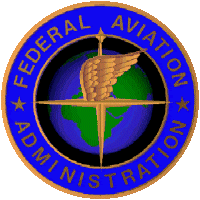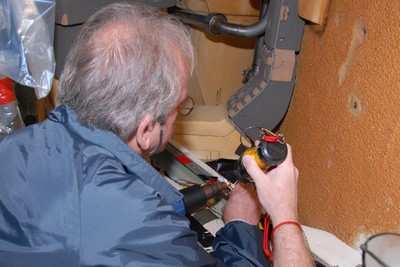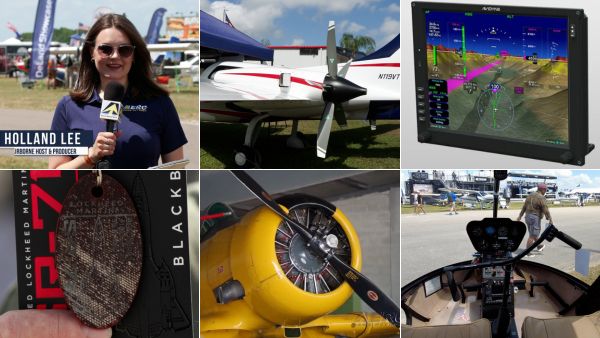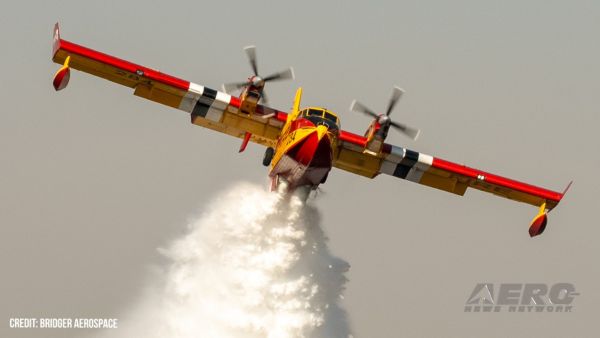Unwanted NPRM Withdrawn... For Now
 A controversial and
much-unloved NPRM is being withdrawn by the FAA in a rare victory
for common sense and the power of a collective industry response to
objectionable rulemaking.
A controversial and
much-unloved NPRM is being withdrawn by the FAA in a rare victory
for common sense and the power of a collective industry response to
objectionable rulemaking.
All the hub-bub concerns a proposed rule published on December
1, 2006 (71 FR 70254). The FAA states that it is "withdrawing a
previously published NPRM that proposed to revise the system of
ratings and require repair stations to establish a quality
program. The NPRM also proposed to require each repair station to
maintain a capability list, designate a chief inspector, and have
permanent housing for facilities, equipment, materials, and
personnel. The proposal would have specified additional instances
where the FAA may deny a repair station certificate, and clarified
some existing repair station regulations. We are withdrawing the
NPRM because we have determined that it does not adequately address
the current repair station environment, and because of the
significant issues commenters raised."
According to the background published with the withdrawal
notice, "in 1989, the FAA held four public meetings to provide a
forum for the public to comment on possible revisions to the rules
governing repair stations. After considering the comments and data
collected from these meetings, the FAA published the Repair
Stations notice of proposed rulemaking (NPRM) in June 1999.
Subsequently, in August 2001, the FAA published the Repair
Stations; final rule with request for comments and direct final
rule with request for comments; final rule. The FAA requested
comments on the paperwork burden and on removing appendix A3 from
part 145, which the FAA had not originally proposed.
On October 19, 2001, the FAA tasked the Aviation Rulemaking
Advisory Committee (ARAC) to address ratings and quality assurance
for repair stations. ARAC provided its recommendations in May
2002.
On December 1, 2006, the FAA published the NPRM entitled Repair
Stations that considered ARAC’s recommendations. The comment
period closed on March 1, 2007. However, the FAA received a request
from the Aeronautical Repair Station Association (ARSA) to extend
the comment period. In a notice published in the Federal
Register on February 27, 2007, the FAA granted a 45-day comment
period extension to April 16, 2007.
 The December 1, 2006
NPRM, applicable to repair station operators and applicants,
proposed the following changes to part 145:
The December 1, 2006
NPRM, applicable to repair station operators and applicants,
proposed the following changes to part 145:
- Repair stations would establish and maintain a capability list
of all articles for which they are rated. The list would identify
each article by manufacturer and the type, make, model, category or
other nomenclature designated by the article’s manufacturer.
Repair stations with an Avionics or a Component rating would be
required to organize their lists by category of the article.
- The FAA would revise the ratings and classes that may be issued
to a certificated repair station. The proposed amendments included
ones that would discontinue the issuance of limited ratings, and
instead allow issuance of limitations to the rating the
certificated repair station holds.
- The FAA would require repair stations to establish a quality
system that includes an internal evaluation system that reviews the
complete repair station once a year.
- Applicants for a repair station certificate would include a
letter of compliance as part of their application.
- A certificate holder would be required to provide permanent
housing for its facilities, equipment, materials, and
personnel.
- Certificate holders would be required to designate a chief
inspector.
- The FAA would use certification from an authority
“acceptable to the FAA” as a basis for issuing a
certificate to a person located outside the United States.
- The FAA would identify reasons it could use to deny the
issuance of a repair station certificate.
The FAA says that they received more than 500 comments to the
NPRM (and published a number of pages that summarized some very
effective and contructive commentary). "While there was general
support for the need to revise the repair station rules, several
commenters asked us to withdraw the rule. Many other commenters
expressed concerns related to ratings (particularly avionics
rating), capability list, quality system, letter of compliance,
chief inspector, housing and facilities, the FAA’s denial of
a repair station certificate, and some were out of scope."

The FAA notes that "while withdrawal of the December 1,
2006, Repair Stations; Proposed Rule does not preclude the FAA from
issuing another proposal on the subject. In fact, we have initiated
rulemaking to update and revise the regulations for repair stations
to more fully address the significant changes in the repair station
business model. The new proposed rule will address concerns from
the 2006 NPRM, as well as other issues related to bringing the
repair station regulations up-to-date with industry practice. The
public will be provided the opportunity for public comment on this
rulemaking through the NPRM process."
 SilverLight Aviation Provides Updates
SilverLight Aviation Provides Updates Airborne Affordable Flyers 03.27.25: MOSAIC To Miss OSH?, Flight Design, Dynon
Airborne Affordable Flyers 03.27.25: MOSAIC To Miss OSH?, Flight Design, Dynon ANN's Daily Aero-Linx (04.01.25)
ANN's Daily Aero-Linx (04.01.25) ANN's Daily Aero-Linx (03.31.25)
ANN's Daily Aero-Linx (03.31.25) Aero-News: Quote of the Day (03.31.25)
Aero-News: Quote of the Day (03.31.25)





